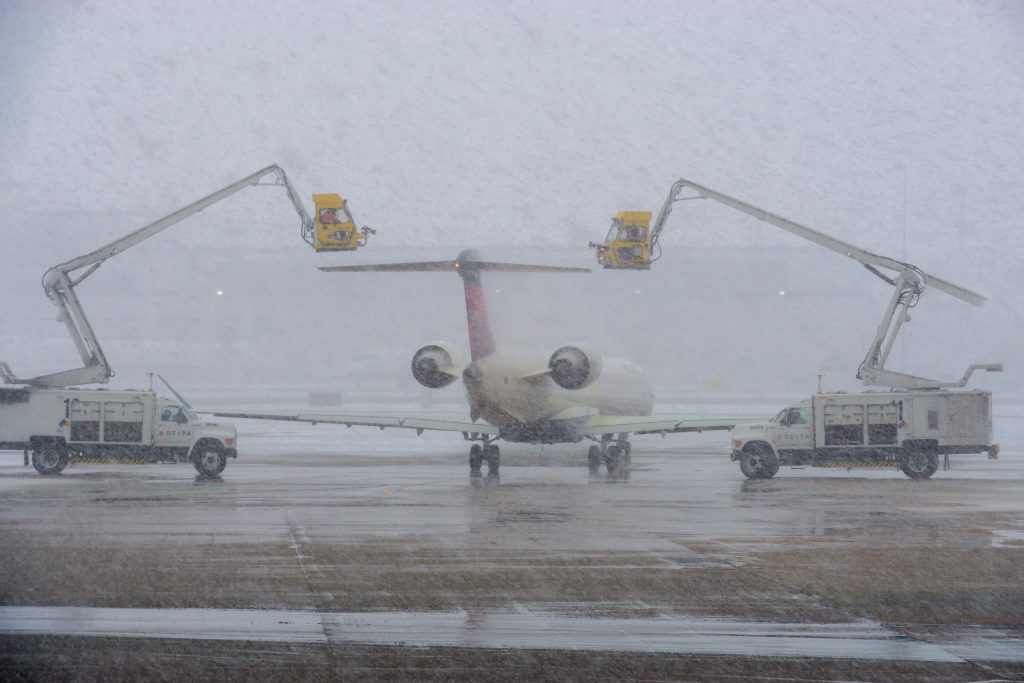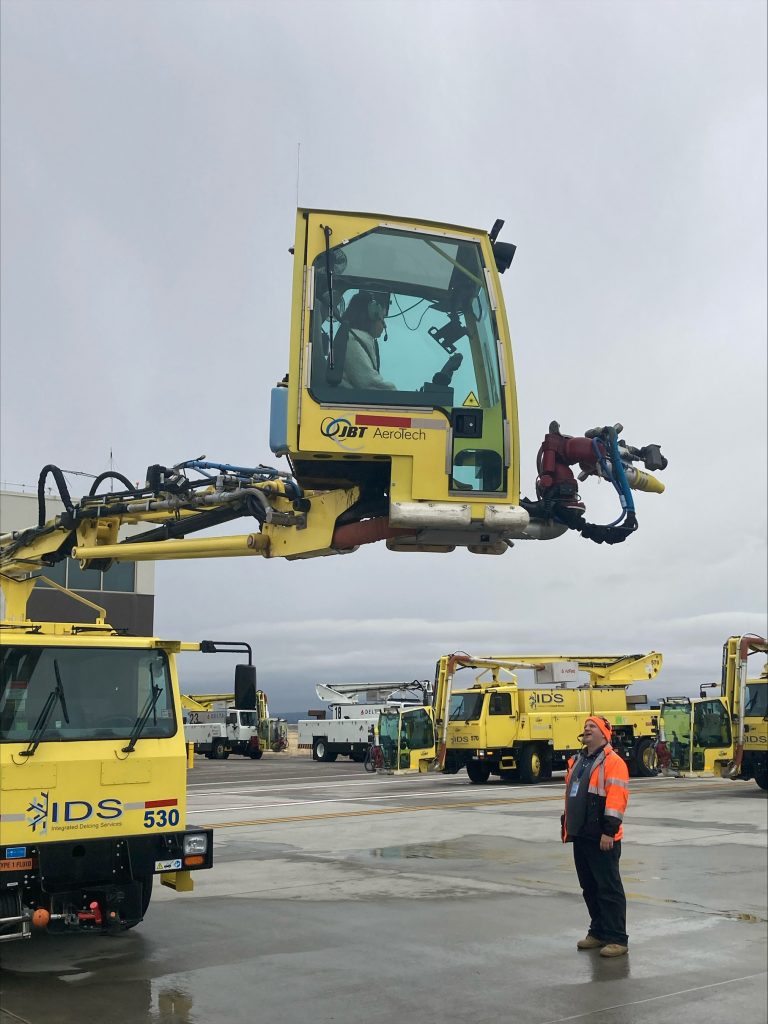Let it Snow! Deicing Operations at SLC are Ready for the Winter Travel Season

If you’re worried about snow and ice impacting your holiday travel plans, you can rest a bit easier knowing Salt Lake City International Airport’s (SLC) deicing facility is one of the most efficient in the country.
“When SLC was planning the new deicing facility the airlines were asked what their ideal operation would be,” said Randy Hubbell, general manager, Integrated Deicing Services (IDS) – the company that manages the deicing operations for the majority of the airlines at SLC Airport. “They really listened and delivered,” Hubbell noted.
Deicing is accomplished by using a combination of glycol, water and air to remove ice and snow from an aircraft. At a typical deicing facility, staff fill the trucks with glycol first, then calculate how much water to add to the tanks to dilute the mixture. To expedite that process, SLC built specialized pumps at its facility that pre-mix the glycol solution. These pumps allow a completely empty truck to refill with both diesel and deicing liquid in about 18 minutes – a quick turnaround considering the trucks can hold more than 16,000 gallons of glycol alone.
IDS owns a total of 17 deicing trucks, and each vehicle holds up to 16,000 gallons of type 1 glycol – used for the bulk of the deicing process – and 400 gallons of type 4, which prevents ice from reforming on an aircraft for about 30-50 minutes. This gives pilots enough time to taxi and take-off without needing to go through the process again. The buckets on these trucks lift 43 feet in the air to ensure every part of the aircraft is covered in deicing solution. During high volume snow events, IDS uses up to four trucks per plane.
All of these efficiencies mean passengers will spend less time on the ground at SLC during the winter. Last season, it took IDS an average of only eight minutes to deice a plane.
Deicing season at SLC can last from early fall and into the summer – depending on temperatures. Aircraft that fly at higher altitudes are more likely to need IDS’s services at the early and late ends of the season, as temperatures at those heights can cause frost and ice to form.
“Last season, we deiced our first aircraft on September 7 and the last one on June 11,” said Hubbell. “It was a record season for us; we deiced more than 3,100 planes.”
Deicing with Sustainability in Mind
The trucks IDS uses are not only equipped to quickly deice aircraft, but are also extremely efficient. Air is used to help remove the snow and ice, which reduces the amount of glycol needed to deice each plane.
“When I started working in this field, we were using around 200 gallons of glycol per plane,” Hubbell said. “Now we’re only using about 30.”
What happens to the glycol after it’s used? SLC recycles it through its glycol reclamation program.
Each deicing pad has grates and a system of pipes that collect the glycol, preventing it from damaging the environment. That glycol is then processed, refined and resold to be used in a variety of other industries.


